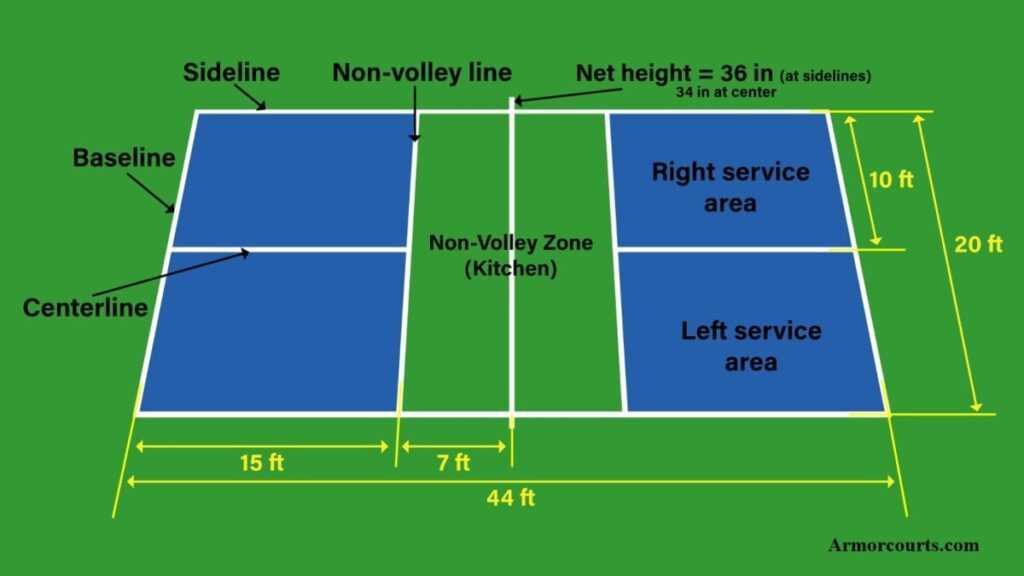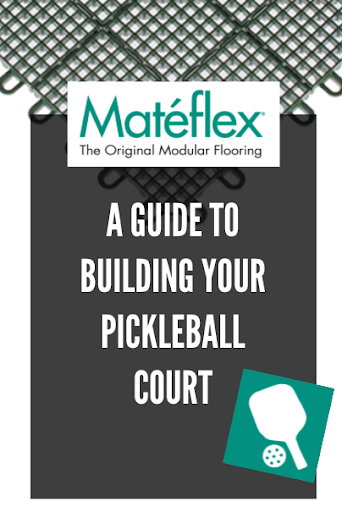Lasting Practices in Pickleball Court Construction You Must Know
As the popularity of pickleball remains to climb, so as well does the demand for lasting practices in court building and construction. This approach not just addresses environmental worries yet additionally improves the long life and functionality of the courts. From choosing environmentally friendly materials to executing efficient water drainage and energy-saving illumination services, there are various techniques to consider. The effect of these methods extends far past the court itself. Comprehending how each component adds to a more lasting future welcomes even more exploration right into the elaborate equilibrium between recreational development and ecological stewardship.
Selecting Eco-Friendly Products
Picking eco-friendly materials is a crucial action in the construction of lasting pickleball courts. The selection of lasting products not just minimizes environmental impact however additionally improves the durability and performance of the court. Secret materials include reused rubber for the surface area, which offers outstanding durability and shock absorption while diverting waste from landfills.
Furthermore, making use of locally sourced materials decreases transport discharges and sustains local economies. Pickleball court construction. As an example, making use of native hardwoods for secure fencing and seats can provide a lasting aesthetic while guaranteeing resilience versus the elements.
Integrating absorptive materials for court structures can better add to sustainability by allowing for natural water drain and minimizing overflow. These selections not only protect regional environments but likewise advertise healthier play settings.
Effective Water Drainage Solutions
While the choice of eco-friendly materials is important, applying efficient water drainage remedies is equally critical for preserving lasting pickleball courts. Proper water drainage not only protects the court surface area from water damage yet also decreases erosion and drainage, advertising environmental integrity.
Effective drain systems can include permeable paving, which enables water to penetrate the ground instead of pooling externally. This minimizes the likelihood of standing water, which can result in mold and other upkeep issues. Furthermore, integrating purposefully put drainage channels and swales can route excess water far from the court area, ensuring a dry playing surface area and stopping soil erosion.
Utilizing native plants in the landscaping around the courts can better enhance drain by taking in excess water and reducing runoff. These plants need much less irrigation and promote biodiversity, aligning with lasting practices.
In addition, it is crucial to frequently preserve the drain system to guarantee its long-term performance. This consists of clearing particles and monitoring for obstructions. By focusing on effective water drainage services, pickleball court builders can substantially add to the sustainability and longevity of the center, ultimately profiting both gamers and the atmosphere.
Energy-Efficient Illumination Options
As the demand for pickleball remains to grow, incorporating energy-efficient lights options right into court design has come to be progressively vital for sustainability. Standard lights systems usually consume excessive power, adding to greater operational costs and environmental effect. Consequently, adopting modern, energy-efficient innovations is crucial for both new constructions and remodellings.
LED (Light Emitting Diode) illumination sticks out as a leading selection as a result of its durability and energy savings (Pickleball court construction). Compared to conventional lighting, LEDs utilize roughly 75% less energy and can last as much as 25 times longer, substantially reducing maintenance expenses. The directional nature of LED illumination minimizes light contamination, making sure that lighting is concentrated on the court instead than bordering areas.

Sustainable Surface Area Alternatives
Checking out lasting surface alternatives for pickleball courts has acquired traction among home builders and gamers alike. The emphasis on environment-friendly products not just straightens with the expanding environmental understanding however likewise improves the performance and durability of the courts.
This material gives exceptional shock absorption, minimizing the risk of injuries for gamers while promoting sustainability. These ceramic tiles are easy to mount and replace, and their convenience permits for numerous court arrangements.
Natural yard courts check this are likewise emerging as a lasting option, promoting biodiversity and decreasing the heat island impact. Nevertheless, they require routine maintenance and water, which might not align with all sustainability objectives.

Water Preservation Techniques

An additional efficient technique includes the installation of rainwater harvesting webpage systems. These systems collect and save rainwater for usage in keeping court surfaces and landscaping. This approach not only preserves drinkable water but likewise reduces dependence on municipal resources.
Moreover, using drought-resistant landscape design around the courts is important. Indigenous plants require less water and are much better adjusted to neighborhood climate conditions, therefore lowering overall water usage. In addition, making use of efficient irrigation systems, such as drip irrigation, makes sure that water is supplied straight to plant roots, reducing evaporation and waste.
Verdict
Incorporating sustainable practices in pickleball court building dramatically adds to ecological conservation and source performance. Making use of eco-friendly products, applying reliable water drainage options, and embracing energy-efficient lighting options can greatly reduce eco-friendly effect. Exploring lasting surface alternatives and using water preservation methods improve the overall sustainability of these recreational centers. By prioritizing these practices, the building and construction of pickleball courts can align with more comprehensive environmental objectives while advertising durability and capability within neighborhoods.
As the popularity of pickleball continues to rise, so as well does the requirement for lasting techniques in court construction.Choosing environmentally friendly materials is a crucial action in the construction of lasting pickleball courts. By focusing on energy-efficient lights choices, pickleball court erectors can add to an extra sustainable future while meeting the needs of gamers and stakeholders alike.Integrating sustainable surface area choices not only enhances the efficiency of pickleball courts however also leads the method for executing effective address water preservation methods.Incorporating lasting practices in pickleball court building and construction dramatically contributes to ecological preservation and source effectiveness.